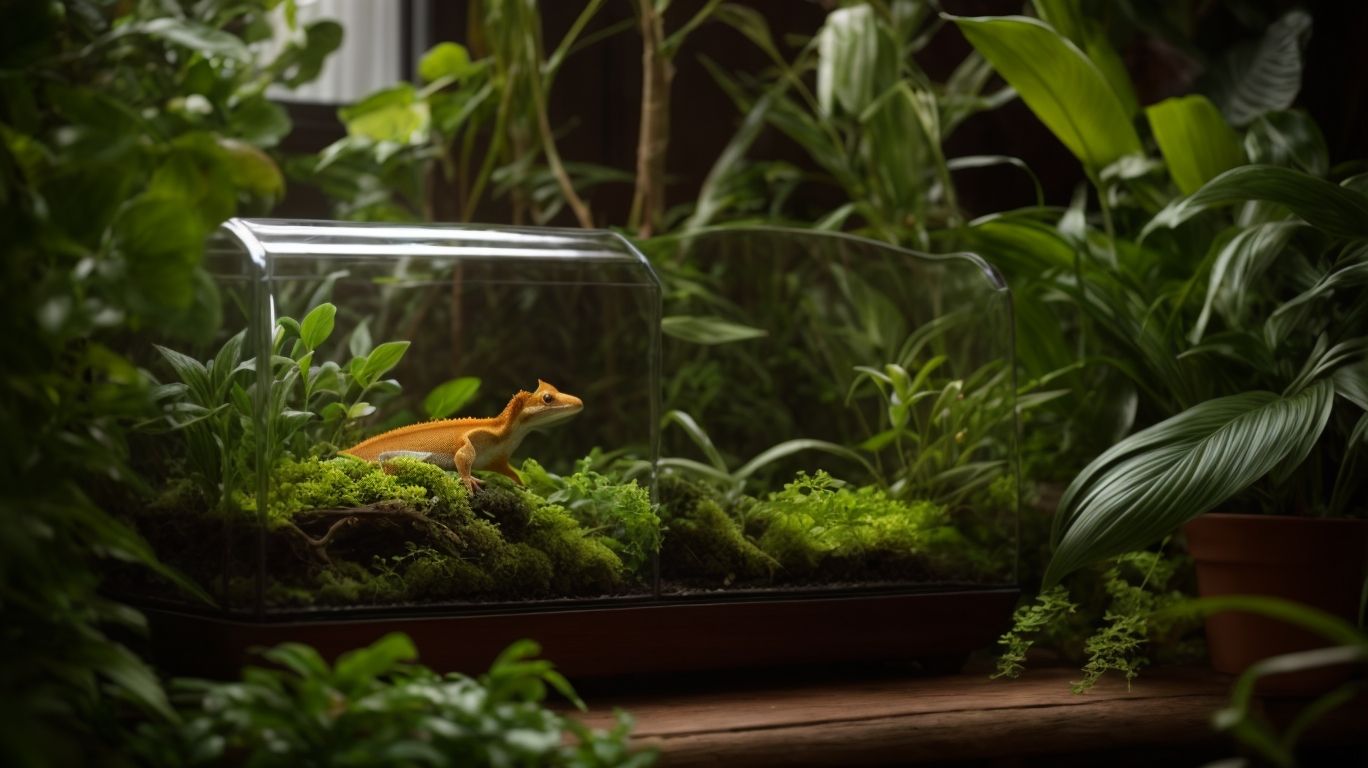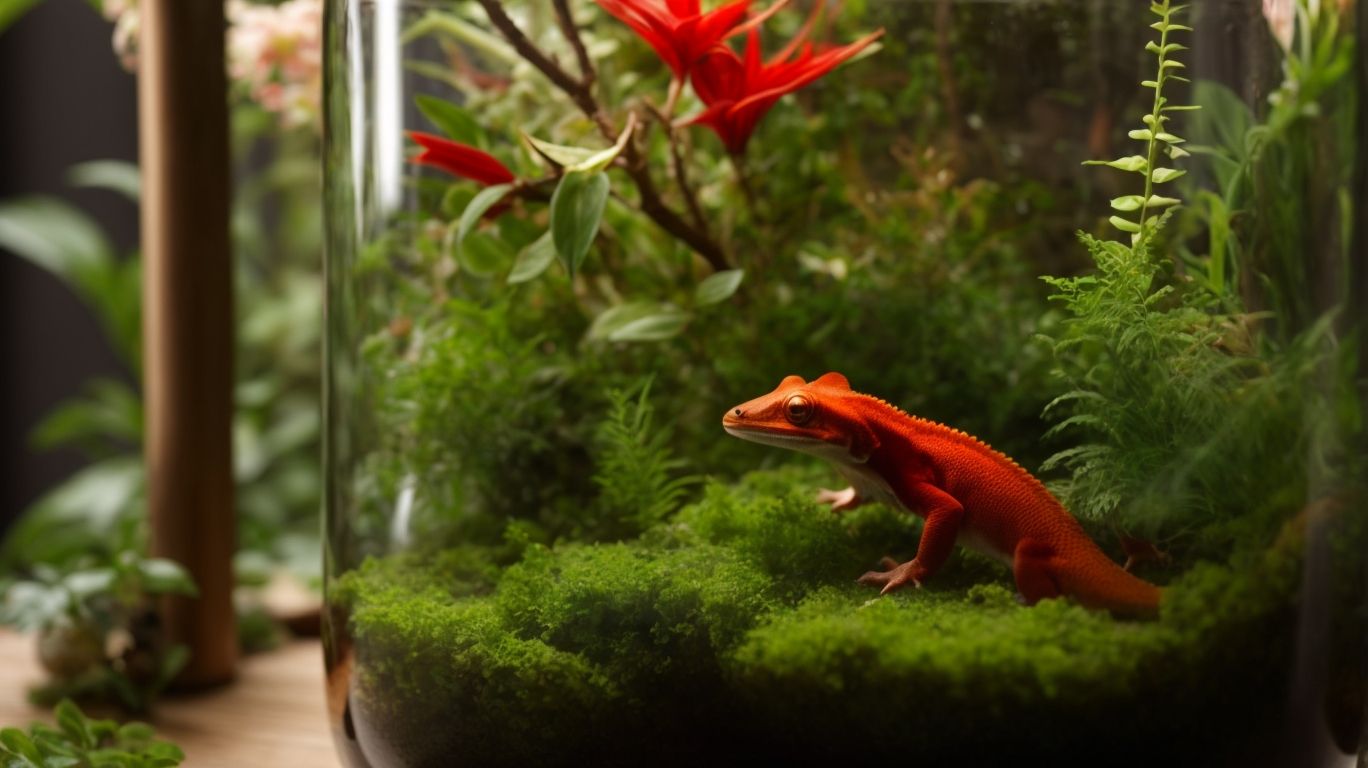
Setting Up the Perfect Habitat for Your Crested Gecko
Are you thinking about getting a crested gecko as a pet? Before you bring one home, it’s important to understand the specific needs of these unique reptiles.
From the ideal enclosure and accessories to the right diet and potential health issues, there are many factors to consider. In this article, we’ll cover everything you need to know about setting up the perfect habitat for your crested gecko, as well as tips for handling and bonding with your new pet. Whether you’re a first-time gecko owner or looking to improve your existing setup, we’ve got you covered.
What Is a Crested Gecko?
The crested gecko, scientifically known as Correlophus ciliatus, is a unique species of reptile originating from the exotic and tropical regions.
Crested geckos are primarily found in the southern part of New Caledonia. They dwell in the lush vegetation of rainforests and occasionally inhabit human settlements.
These reptiles are known for their distinctive crest atop their head and have become a popular choice for enthusiasts. They are admired for their vibrant coloration and charming personality.
Crested geckos are arboreal, meaning they spend most of their time in trees. They use their specialized toe pads to effortlessly navigate their environment.
One of the most remarkable abilities of these geckos is their ability to shed their tails as a defense mechanism against predators. This makes them both fascinating and resilient creatures.
What Are the Basic Needs of a Crested Gecko?
Providing for the basic needs of a crested gecko involves setting up a suitable habitat and environment that supports their well-being and care.
What Type of Enclosure Is Best for a Crested Gecko?
Selecting the right enclosure, such as a well-designed terrarium or vivarium, is crucial for providing the ideal living space and size for a crested gecko.
Terrariums offer a glass-fronted, breathable environment and are often easier to maintain humidity levels, essential for crested geckos.
On the other hand, vivariums provide a more naturalistic setting with live plants and ample climbing opportunities. The enclosure’s size directly impacts the gecko’s well-being, as it should offer enough space for activities, including climbing, hiding, and exploring.
Considering the vertical space is equally important, as crested geckos are exceptional climbers. Therefore, providing a spacious and well-structured enclosure is paramount for their overall health and happiness.
What Are the Necessary Accessories for a Crested Gecko’s Habitat?
In addition to the enclosure, it’s important to provide necessary accessories for a crested gecko’s habitat. These include decorations, enrichment items, and proper ventilation.
Accessories like climbing branches, artificial plants, and hiding spots are crucial for creating a stimulating and natural environment. Enrichment items, such as branches for climbing and shelves for resting, help mimic their natural habitat and provide mental and physical stimulation for the gecko.
Proper ventilation is also essential for maintaining air circulation and preventing the buildup of excess humidity. This is important as high humidity levels can lead to respiratory issues. Consider incorporating a misting system or humidity gauge to ensure the optimal environment for your crested gecko’s health and well-being.
What Is the Ideal Temperature and Humidity for a Crested Gecko?
Maintaining the ideal temperature, humidity levels, and providing suitable UVB and heat sources are critical factors that contribute to the well-being of a crested gecko.
Environmental elements are crucial for maintaining the health and behavior of crested geckos. Mimicking their natural habitat with optimal temperature and humidity levels promotes proper digestion, shedding, and immune function. Exposure to UVB light is essential for calcium metabolism and preventing metabolic bone disease. Suitable heat sources help regulate body temperature, supporting physiological functions and reproduction. Prioritizing these factors ensures crested geckos lead healthier and happier lives.
What Type of Substrate Should Be Used in a Crested Gecko’s Enclosure?
Selecting the appropriate substrate is crucial for maintaining cleanliness and potentially creating a bioactive setup within a crested gecko’s enclosure.
The choice of substrate plays a significant role in mimicking the natural environment while promoting healthy behaviors in crested geckos.
Options such as organic soil, coconut fiber, or moss not only support burrowing and digging habits but also aid in moisture retention and odor control.
Incorporating natural leaf litter can provide enrichment and encourage the growth of beneficial microorganisms, fostering a self-sustaining ecosystem in a bioactive setup.
These substrates contribute to maintaining a clean and hygienic environment, promoting the overall well-being of crested geckos.
What Types of Hides and Decorations Are Suitable for a Crested Gecko?
Incorporating suitable hides and decorations that align with a naturalistic and aesthetically pleasing environment is essential for the well-being of a crested gecko.
Offering a diverse selection of hides, such as cork bark, coconut hides, and bamboo tubes, allows geckos to retreat, climb, and explore, mimicking their natural habitat in the wild.
Including live or artificial plants can enhance the visual appeal of the habitat, while also providing cover and enrichment for the gecko. It’s crucial to securely position decorations and hides to prevent any potential harm to the gecko as it moves and explores its habitat.
What Do Crested Geckos Eat?
The diet of crested geckos primarily consists of insect prey and may require supplementation with calcium to meet their nutritional needs.
Crested geckos are primarily insectivores, with their diet varying from crickets, roaches, and mealworms to provide essential protein and nutrients.
In captivity, it’s important to ensure that the insects are gut-loaded with nutritious food or given a calcium supplement to ensure the geckos receive adequate nutrition.
Crested geckos may also need a calcium supplement, usually in the form of a powder dusted onto their insect prey, to maintain their bone health and prevent metabolic bone disease, which is a common concern in captive geckos.
What Is the Best Diet for a Crested Gecko?
Providing a balanced diet that includes gut-loaded insect prey and offers nutritional variety is crucial for ensuring the best nutrition for a crested gecko.
This diet should consist primarily of live insects, such as crickets, roaches, and mealworms, which have been fed a nutritious and high-quality diet.
Adding variety through fruit purees, mashed fruits, and commercially available crested gecko diet supplements is essential to meet their nutritional needs. A well-rounded diet will provide the necessary vitamins, minerals, and proteins for the overall health and vitality of your crested gecko.
What Are Some Safe and Nutritious Treats for Crested Geckos?
Offering safe and nutritious treats that provide variety in the diet can be beneficial for the overall health and enrichment of crested geckos.
These treats can contribute to a well-rounded diet, ensuring that your crested gecko receives essential nutrients.
In addition, introducing treats can stimulate mental and physical activity, promoting enrichment and preventing boredom.
By incorporating a diverse range of treats, such as insects and fruits, you can help mimic the gecko’s natural feeding behaviors in the wild.
This variety not only enhances their physical health but also enriches their experience, leading to a happier and more active pet.
What Are the Common Health Issues for Crested Geckos?
Crested geckos may experience various health issues related to maintenance, shedding, and stress, which require careful monitoring and attention.
How Can You Prevent Health Problems in Crested Geckos?
Preventing health problems in crested geckos involves attentive care, regular observation, and proper acclimatization to their environment.
This includes providing a suitable enclosure with proper temperature and humidity levels. It’s essential to offer a balanced diet and ensure they are getting enough calcium and vitamin D3.
Regularly clean the enclosure to prevent the growth of harmful bacteria. Handle your gecko gently and avoid sudden movements to reduce stress. Observing their behavior and appearance can help catch any signs of illness early.
Proper acclimatization and a nurturing environment can significantly contribute to your crested gecko’s overall well-being and prevent potential health issues.
What Are Some Signs of Illness in Crested Geckos?
Recognizing signs of illness in crested geckos involves observing changes in behavior, interaction patterns, and potential signs of aggression that deviate from their usual demeanor.
These small reptiles are generally low-maintenance pets, but it’s crucial to stay vigilant for any unusual behaviors. Loss of appetite, lethargy, or changes in their regular activity levels can indicate health issues.
In addition, any signs of stress, such as excessive hiding or unusually aggressive behavior, may also be indicators of potential illness. It’s always best to seek professional advice from a veterinarian who specializes in reptiles for accurate diagnosis and treatment.
How to Clean and Maintain a Crested Gecko’s Habitat?
Maintaining a clean and hygienic habitat for crested geckos involves regular monitoring, proper cleanliness, and potentially utilizing a misting system for humidity control.
Regular monitoring is essential to ensure that the habitat remains clean and free of any potential hazards. This includes removing uneaten food, feces, and shedding skin regularly.
Cleaning the enclosure with a reptile-safe disinfectant on a regular basis is crucial to prevent the buildup of bacteria. Utilizing a misting system can help maintain the optimal humidity levels, mimicking the gecko’s natural habitat. It’s important to ensure that the misting system is functioning properly and the substrate is not overly damp, which can lead to mold and bacterial growth. By following these cleaning and maintenance procedures, you can provide a safe and healthy environment for your crested gecko.
What Are Some Tips for Handling and Bonding with Your Crested Gecko?
Developing a bond with a crested gecko involves gradual handling, building trust, and providing opportunities for socialization to foster a positive relationship.
When it comes to handling crested geckos, patience is key. Take your time and allow your gecko to get used to your presence before attempting to handle them. Spend time near their habitat, talk to them gently, and offer treats to create a positive association.
Once your gecko is comfortable, start with short handling sessions. Keep the interactions positive and reassuring. Consistency and gentle handling will help build trust and strengthen the bond with your crested gecko.




No Comments